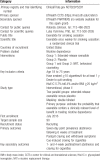Exenatide once weekly for smoking cessation: study protocol for a randomized clinical trial
- PMID: 29480848
- PMCID: PMC5943874
- DOI: 10.1097/MD.0000000000009567
Exenatide once weekly for smoking cessation: study protocol for a randomized clinical trial
Abstract
Background: Cigarette smoking is the greatest preventable cause of morbidity and premature mortality in the United States. Approved pharmacological treatments for smoking cessation are marginally effective, underscoring the need for improved pharmacotherapies. A novel approach might use glucagon-like peptide-1 (GLP-1) agonists, which reduce alcohol and drug use in preclinical studies. GLP-1 is produced in the intestinal L-cells and in the hindbrain. The peptide maintains glucose homeostasis and reduces food intake. Several GLP-1 agonists are used clinically to treat type 2 diabetes and obesity, but none have been tested in humans to reduce smoking.
Aims: We will examine whether extended-release exenatide reduces smoking, craving, and withdrawal symptoms, as well as cue-induced craving for cigarettes.
Methods: We will enroll prediabetic and/or overweight treatment seeking smokers (n = 90) into a double-blind, placebo-controlled, randomized clinical trial. Participants will be randomized in a 1:1 ratio to receive exenatide or placebo. All participants will receive transdermal nicotine replacement therapy (NRT) and behavioral counseling. Abstinence from smoking (verified via expired CO level of ≤5 ppm), craving (Questionnaire of Smoking Urges score), and withdrawal symptoms (Wisconsin Scale of Withdrawal Symptoms score) will be assessed weekly during 6 weeks of treatment and at 1 and 4 weeks posttreatment. Cue-induced craving for cigarettes will be assessed at baseline and at 3 weeks of treatment following virtual reality exposure.
Expected outcomes: We hypothesize that exenatide will increase the number of participants able to achieve complete smoking abstinence above that achieved via standard NRT and that exenatide will reduce craving and withdrawal symptoms, as well as cue-induced craving for cigarettes.
Copyright © 2017 The Authors. Published by Wolters Kluwer Health, Inc. All rights reserved.
Conflict of interest statement
The authors have no conflicts of interest to disclose.
Similar articles
-
Exenatide Adjunct to Nicotine Patch Facilitates Smoking Cessation and May Reduce Post-Cessation Weight Gain: A Pilot Randomized Controlled Trial.Nicotine Tob Res. 2021 Aug 29;23(10):1682-1690. doi: 10.1093/ntr/ntab066. Nicotine Tob Res. 2021. PMID: 33831213 Free PMC article. Clinical Trial.
-
Exenatide as an adjunct to nicotine patch for smoking cessation and prevention of postcessation weight gain among treatment-seeking smokers with pre-diabetes and/or overweight: study protocol for a randomised, placebo-controlled clinical trial.BMJ Open. 2023 Jun 14;13(6):e072707. doi: 10.1136/bmjopen-2023-072707. BMJ Open. 2023. PMID: 37316311 Free PMC article.
-
Smokers deprived of cigarettes for 72 h: effect of nicotine patches on craving and withdrawal.Psychopharmacology (Berl). 2002 Nov;164(2):177-87. doi: 10.1007/s00213-002-1176-1. Epub 2002 Aug 27. Psychopharmacology (Berl). 2002. PMID: 12404080 Clinical Trial.
-
Clinical efficacy and safety of once-weekly glucagon-like peptide-1 agonists in development for treatment of type 2 diabetes mellitus in adults.Ann Pharmacother. 2012 Jan;46(1):68-78. doi: 10.1345/aph.1Q379. Ann Pharmacother. 2012. PMID: 22232377 Review.
-
[Smoking reduction and temporary abstinence: new approaches for smoking cessation].J Mal Vasc. 2003 Dec;28(5):293-300. J Mal Vasc. 2003. PMID: 14978435 Review. French.
Cited by
-
Glucagon-like peptide-1 receptor regulation of basal dopamine transporter activity is species-dependent.Neurochem Int. 2020 Sep;138:104772. doi: 10.1016/j.neuint.2020.104772. Epub 2020 May 25. Neurochem Int. 2020. PMID: 32464226 Free PMC article.
-
A retrospective study of smoking cessation intervention among university students.Medicine (Baltimore). 2018 Jun;97(26):e11259. doi: 10.1097/MD.0000000000011259. Medicine (Baltimore). 2018. PMID: 29952996 Free PMC article.
-
Exenatide Adjunct to Nicotine Patch Facilitates Smoking Cessation and May Reduce Post-Cessation Weight Gain: A Pilot Randomized Controlled Trial.Nicotine Tob Res. 2021 Aug 29;23(10):1682-1690. doi: 10.1093/ntr/ntab066. Nicotine Tob Res. 2021. PMID: 33831213 Free PMC article. Clinical Trial.
-
Testing the effects of the GLP-1 receptor agonist exenatide on cocaine self-administration and subjective responses in humans with cocaine use disorder.Drug Alcohol Depend. 2021 Apr 1;221:108614. doi: 10.1016/j.drugalcdep.2021.108614. Epub 2021 Feb 15. Drug Alcohol Depend. 2021. PMID: 33621809 Free PMC article. Clinical Trial.
-
Ecological momentary assessment and cue-elicited drug craving as primary endpoints: study protocol for a randomized, double-blind, placebo-controlled clinical trial testing the efficacy of a GLP-1 receptor agonist in opioid use disorder.Addict Sci Clin Pract. 2024 Jul 27;19(1):56. doi: 10.1186/s13722-024-00481-7. Addict Sci Clin Pract. 2024. PMID: 39061093 Free PMC article.
References
-
- The Health Consequences of Smoking-50 Years of Progress: A Report of the Surgeon General. Atlanta Georgia 2014.
-
- Egecioglu E, Steensland P, Fredriksson I, et al. The glucagon-like peptide 1 analogue Exendin-4 attenuates alcohol mediated behaviors in rodents. Psychoneuroendocrinology 2013;38:1259–70. - PubMed
Publication types
MeSH terms
Substances
LinkOut - more resources
Full Text Sources
Other Literature Sources
Medical


